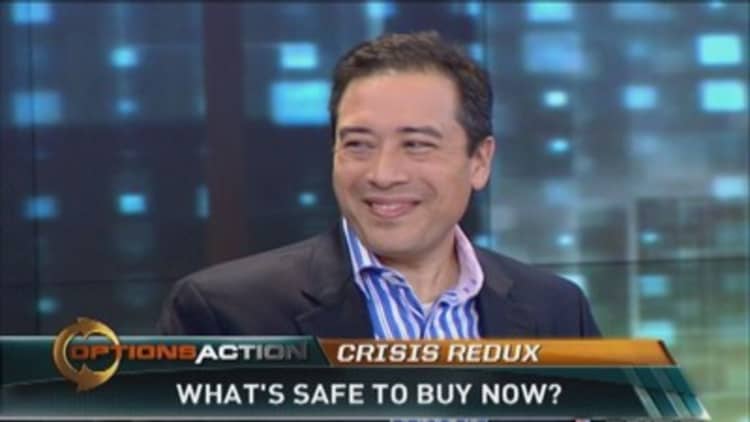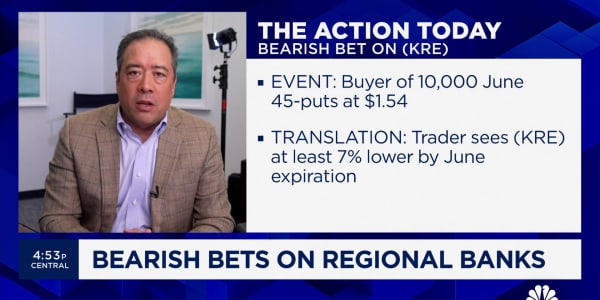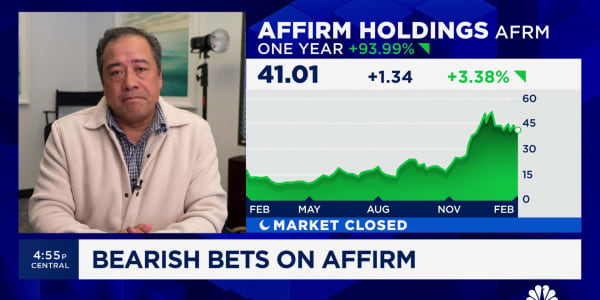The CBOE Volatility Index, a gauge of market fear, rose above 20 on Monday for the first time in four months. But the broader action in the VIX suggests that traders don't expect the market's current rout to last too much longer.
Though the VIX rose above 20 for the first time since Oct. 9, the move in VIX futures dated to August, September and October has been much more restrained, with some longer-term VIX futures contracts actually falling on the day. This would seem to indicate that while traders are fearful about what the next month or two will bring, they don't see the current decline as the beginning of a more serious meltdown.
(Read more: Good news, January is over! Bad news: February may be worse)
"Traders feel the event is happening right now, so they want protection in today's correction. Six months later, things could settle back into a normal market," said Brian Stutland, managing member of the Stutland Volatility Group and a major market maker in VIX futures and options.
This sort of action is typical for recent spikes in the VIX (which measures implied volatility based on the prices of S&P 500 options), but it need not always be the case.

"At the end of 2007 through 2008, or even when you saw the fiscal cliff worries at the end of 2012, they were taking up all of the VIX futures—you're not seeing that now," Stutland told CNBC.com. "It doesn't mean there won't be volatility six months from now. What it means is that there's not extreme nervousness about any lasting effects about what's going on right now."
In fact, Stutland is predicting that the market has already reached its nadir—and volatility its peak. On Monday, he took profits in the VIX and reduced his firm's exposure to volatility.
Holding longer-term volatility has not been a great play in recent times. There were only two brief periods in 2013 when the VIX topped 20 (in late June and in October); in each case, the action preceded a quick plunge in volatility as the stock market regained its footing.
(Read more: How to prepare for this week's critical number)
Still, the fact that money is moving out of longer-dated VIX futures into nearer-dated ones certainly indicates that as the hits a nearly three-month low, the fear is very real.
"What this is telling you is that people are paying up for short-term protection," said Larry McDonald, a senior director at Newedge who writes at LawrenceGMcDonald.com. "The pros think it's going to get worse over the next three weeks."
—By CNBC's Alex Rosenberg. Follow him on Twitter: @CNBCAlex.
Follow the show on Twitter: @CNBCOptions.






